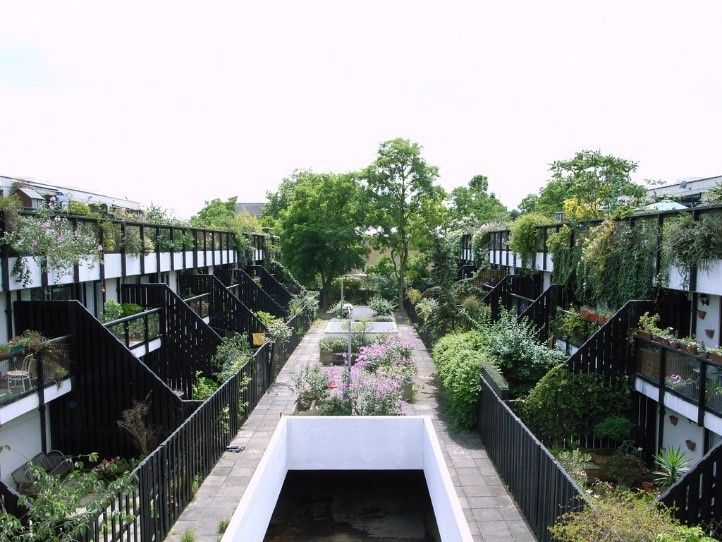
Article posted by
Neave Brown (b.1929) demonstrated radical thinking, supreme design skill, and a resilience that enabled him to deliver quality social homes. He was an architect with a true empathy for the people who lived in the houses he designed. Brown believed every home should have its own front door and its own private external space. He used these ideas to dramatic effect in a series of projects in the 1960s and 1970s – which included his masterpiece, Alexandra Road Estate. Brown has a special legacy that continues to endure.
In paying tribute to Brown, RIBA’s president Ben Derbyshire said his designs “still stand as a radical antidote to much of the unthinking, not to say degrading, housing product of the era.” But, where did it all begin? Long before Brown made his mark on housing, he studied at the Architectural Association in London from 1950 until 1956. After graduation, he worked for three years at the Lyons Israel Ellis Gray firm. At the time, this firm was one of the best practices for young architects to learn their craft. From there he went on to set up his own practice and with the help of his friends, built five modern terraced houses in Winscombe Street, Highgate. Completed in 1965, the houses were given a Grade II listing by English Heritage in 2014.
Brown proved to be an expert designer. He was able to create four bedrooms and two bathrooms within the cost limits and space constraints that had been prescribed for a three-bedroom, one-bathroom unit. The houses on Winscombe street are joined together by a plain white upper level that overhangs the front.
On the strength of these housing projects, Brown was hired to design Dunboyne Road estate on Fleet Road, Camden. This local housing scheme was one of the first to use low-rise, high-density planning. It was completed in 1967 and has a simple, modern aesthetic. Its plain white volumes are given more definition by a black frame, which overlooks private gardens that create a green, suburban space.

His next housing development, the Alexandra Road Estate, was to be the project that defined his career. This estate, which comprised of 520 apartments is arranged around a pedestrian walkway. The site includes a school, a community centre, a youth club and parkland. Constructed from unpainted reinforced concrete, the Alexandra Road Estate was designed to foster community spirit. While it is now considered a landmark of British social housing, it faced much scrutiny after its construction. The building was finished in 1978 having run over its budget and the council launched a public inquiry into the overspending. Being the subject of such a controversy destroyed Brown’s reputation and he never built another project again in the UK. He said of the incident, “Nobody is going to employ an architect, no matter what the results, that has been in a public inquiry.”
However, Brown did go on to find success overseas. He designed further projects in the Netherlands, including Small Haven, completed in 2002. This was an urban development consisting of terraced apartments, shopping, and office spaces. It marked Brown’s final design project before he retired from architecture. In his twilight years, he went back to university to study Fine Art but still continued to speak on the subject of social housing at various events and interviews.
What distinguished Brown as an architect was in the way he was such a fierce defender of the homes of local people. Brown’s legacy reflected a progressiveness in social housing. He helped drive a modernist agenda for marginalised communities. When he won the RIBA Royal Gold Medal in 2017, there was a new appreciation for his work. Brown died peacefully in his home in January 2018. He remains a true pioneer of quality public housing.
We’re here if you need help defining a role or brief, specialist insight to help shape your ideas or expert help with your recruitment process. Just get in touch to arrange a conversation with one of the team or if you’re ready for us to find the perfect person for you, send us your brief.
If you’re looking for your ideal job send your CV to us to get started or search for the latest job vacancies and we’ll get the ball rolling.